Exploring Xumi Fushou Temple: A Journey Through History and Spirituality
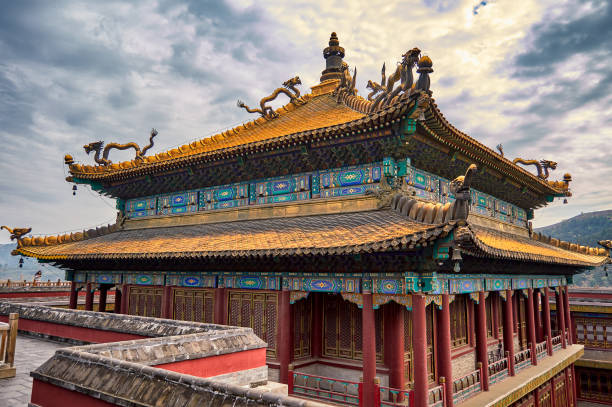
An Essential Guide to Visiting Xumi Fushou Temple
In This Guide
- An Essential Guide to Visiting Xumi Fushou Temple
- The Rich History and Legends of Xumi Fushou Temple
- Main Highlights: What You Absolutely Can’t Miss
- Planning Your Visit: A Practical Guide
- Tickets: Prices, Booking, and Tips
- How to Get There: A Complete Transportation Guide
- Local Cuisine and Accommodation Nearby
- Frequently Asked Questions
- Final Thoughts on Your Trip
Nestled in the scenic landscape of Chengde, the Xumi Fushou Temple (须弥福寿之庙) stands as a serene testament to Chinese architectural beauty and spiritual heritage. This temple, often referred to as the “Sumeru Temple,” is not just a place of worship but a rich historical site that invites visitors to delve into the intricate tapestry of Chinese Buddhism and the Qing dynasty’s cultural influences.
The temple, located just north of the famed Chengde Summer Resort, offers a harmonious blend of natural beauty and man-made artistry. With its vibrant red walls and ornate rooftops, the Xumi Fushou Temple exudes an aura of tranquility that is both inviting and awe-inspiring. As you approach, you’ll be greeted by the gentle rustle of leaves and the distant echoes of chanting monks, setting the perfect backdrop for a reflective journey through history.

Xumi Fushou Temple.
Key Highlights of Your Visit
-
Historical Significance: Founded during the Qing dynasty, the temple has welcomed distinguished figures, including the Panchen Lama of Tibet. It reflects the harmonious coexistence of Han Chinese and Tibetan cultures, making it a pivotal site for understanding the region’s religious dynamics.
-
Architectural Wonders: The temple features a stunning array of intricate carvings and colorful murals that depict Buddhist iconography. The architecture is a splendid representation of traditional Chinese temple design, characterized by its layered roofs and symmetrical layout.
-
Access and Practical Tips: Visitors can conveniently combine their trip to Xumi Fushou Temple with a visit to the nearby Potala Palace, as both sites share an admission ticket. Be sure to bring a flashlight for the dimly lit interiors, especially on rainy days when the temple’s atmospheric charm truly shines.
-
Family-Friendly Environment: The temple is accessible for all ages, making it an excellent destination for families. The peaceful surroundings offer a perfect escape from the hustle and bustle of city life, allowing children and seniors alike to enjoy the serenity.
-
Cultural Immersion: Engage with the local monks who preserve the temple’s traditions and practices. Their insights can enrich your understanding of Buddhism and its role in Chinese culture.
Visiting Xumi Fushou Temple is more than just a sightseeing trip; it’s an opportunity to connect with China’s spiritual roots and witness the enduring legacy of its ancient civilizations. Whether you’re a history buff, a culture enthusiast, or simply seeking a tranquil spot to reflect, this temple promises an enriching experience that lingers long after your visit.
The Rich History and Legends of Xumi Fushou Temple
Nestled in the scenic hills of Chengde, the Xumi Fushou Temple (须弥福寿之庙) is a captivating testament to China’s rich cultural heritage and spiritual legacy. This temple, often overshadowed by the grandeur of its neighbor, the Potala Palace, holds a treasure trove of history and legends that beckon travelers eager to delve into the depths of Chinese Buddhism and imperial history.
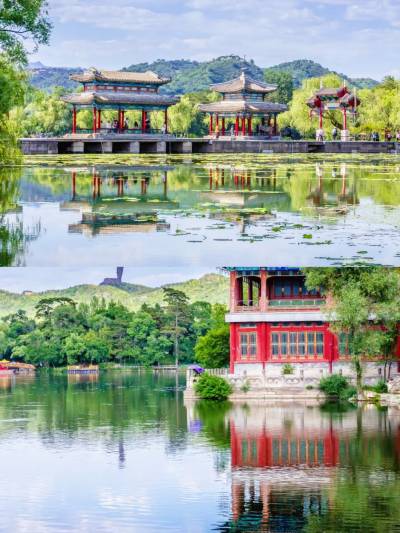
Xumi Fushou Temple.
A Historical Overview
Constructed during the reign of the Qing Dynasty, Xumi Fushou Temple was built in 1771 under the auspices of Emperor Qianlong. Its primary purpose was to serve as a place of worship for the Tibetan Buddhist Panchen Lama, who visited Chengde multiple times. The temple is a part of the Eight Outer Temples, a group of religious sites established to promote harmonious relations between the Han Chinese and Tibetan populations.
Xumi Fushou Temple is designed in the traditional Tibetan architectural style, featuring vibrant colors and intricate decorations that reflect the spiritual significance of the site. The temple’s name translates to “Temple of Sumeru’s Blessing,” referencing Mount Sumeru, a sacred mountain in Buddhist cosmology that symbolizes the axis of the universe.
Architectural Marvels
Visitors to Xumi Fushou Temple are greeted by its striking red façade and ornate roofs, adorned with golden tiles and elaborate carvings. The temple is renowned for its stunning interiors, which include meticulously crafted statues of Buddhist deities and various murals that depict Buddhist teachings and tales. A highlight is the central hall, where a colossal statue of the Maitreya Buddha resides, embodying the ideals of peace and compassion.
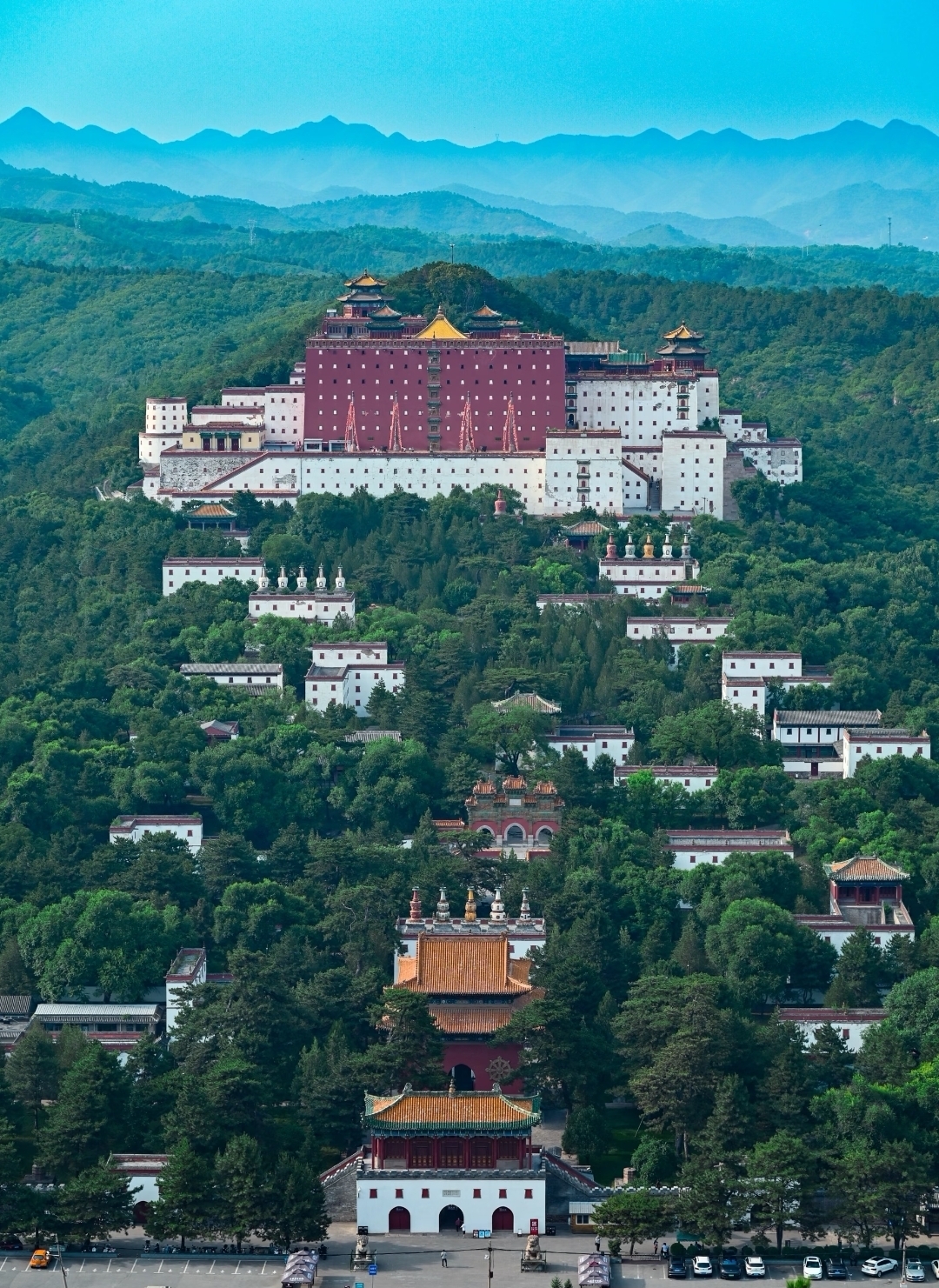
Xumi Fushou Temple.
Legends and Folklore
The legends surrounding Xumi Fushou Temple are as rich as its history. One prominent tale speaks of a miraculous event during the temple’s construction. It is said that the workers faced numerous challenges, including harsh weather and dwindling resources. Just as despair began to set in, a local monk, known for his deep spirituality, prayed earnestly for divine intervention. Miraculously, the sun broke through the clouds, illuminating the construction site and providing the workers with renewed strength and energy. This event is celebrated as a testament to the temple’s spiritual significance and the blessings it bestows upon devotees.
Another fascinating legend involves the temple’s connection to the Panchen Lama. It is believed that during one of his visits, he performed a series of rituals that not only blessed the temple but also infused it with a powerful spiritual energy that continues to attract pilgrims and tourists alike. Many visitors claim to feel a profound sense of peace and enlightenment upon entering the temple, further solidifying its reputation as a sacred site.
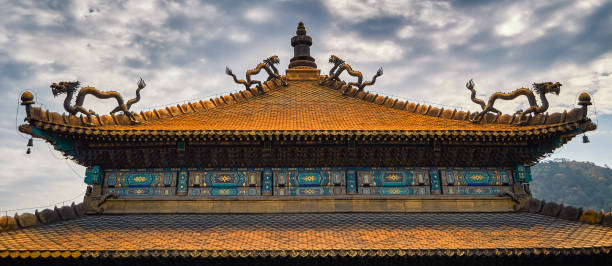
Xumi Fushou Temple.
A Living Heritage
Today, Xumi Fushou Temple remains an active place of worship, managed by dedicated monks who continue the traditions of their forebears. This living heritage allows visitors to witness authentic Buddhist practices, providing a unique opportunity to engage with the spiritual essence of the temple. The tranquil ambiance, combined with the temple’s historical significance, makes it a must-visit for travelers seeking a deeper understanding of Chinese culture and Buddhism.
Visiting Xumi Fushou Temple
When planning your visit to Xumi Fushou Temple, consider exploring the nearby attractions, such as the Potala Palace and the Imperial Summer Palace, which offer complementary insights into the region’s history. The temple is conveniently accessible, and visitors are encouraged to take their time to absorb the beauty and serenity of this remarkable site. Remember to bring a flashlight if you wish to explore its darker corners and appreciate the intricate details of the artwork within.
In conclusion, Xumi Fushou Temple stands as a monument to the enduring legacy of Chinese Buddhism and the harmonious coexistence of diverse cultures. Its rich history and captivating legends invite international travelers to experience a piece of China’s spiritual heart.
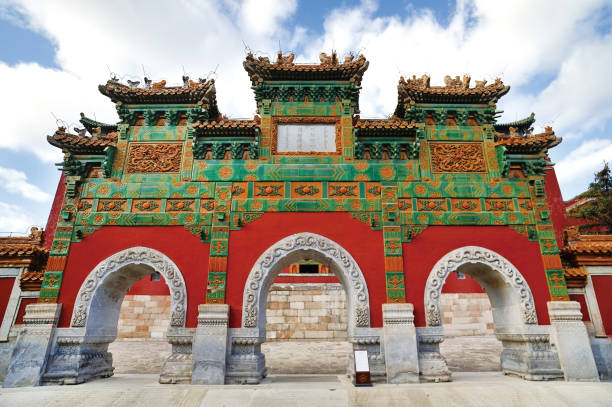
Xumi Fushou Temple.
Main Highlights: What You Absolutely Can’t Miss
Discovering the Wonders of Xumi Fushou Temple
Nestled within the picturesque landscape of Chengde, Xumi Fushou Temple (须弥福寿之庙) stands as a testament to both the architectural prowess and spiritual depth of Chinese culture. Renowned for its historical significance and stunning aesthetics, this temple is a must-visit for anyone keen to explore the rich tapestry of Chinese history and religion.
1. Architectural Marvel
One of the most striking features of Xumi Fushou Temple is its grand architecture. The temple is characterized by its vibrant red walls and intricately decorated roofs, which are adorned with traditional Chinese motifs. The design reflects the fusion of Han and Tibetan styles, creating an atmosphere that is both serene and majestic. Don’t miss the chance to appreciate the ornate details, especially if you venture up to the rooftop where you can enjoy panoramic views of the surrounding landscape and the Chengde Summer Resort.
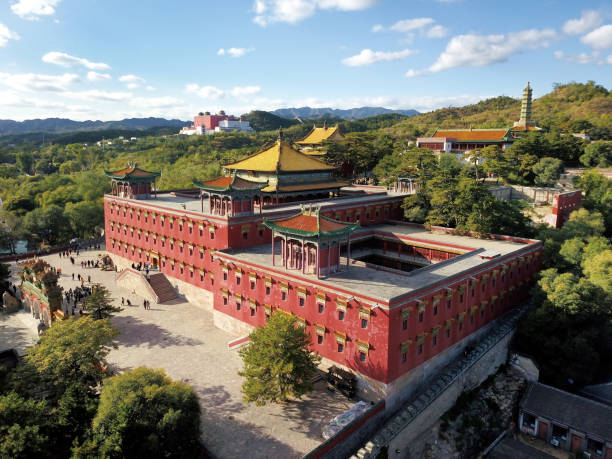
Xumi Fushou Temple.
2. Historical Significance
Xumi Fushou Temple is not just a place of worship; it holds a significant place in Chinese history. Built during the Qing Dynasty, it served as a venue for the Panchen Lama’s visits from Tibet. Understanding its role in the religious and political dynamics of the time adds depth to your visit. This historical context makes it a fascinating stop for anyone interested in the interplay between religion and governance in ancient China.
3. Cultural Experiences
Visitors will find that the temple is still actively managed by monks, offering a genuine glimpse into traditional Buddhist practices. Take the time to observe the rituals and daily activities of the monks, which can provide insight into the spiritual life that thrives here. If you’re lucky, you might even witness a prayer ceremony, which can be a moving experience.
4. Art and Relics
Inside the temple, you will discover a rich collection of Buddhist art and relics. Intricate sculptures, murals, and statues adorn the interior, each telling a story of its own. Make sure to bring a flashlight, as some areas can be dimly lit, revealing hidden details that enhance your understanding of the artworks’ significance.
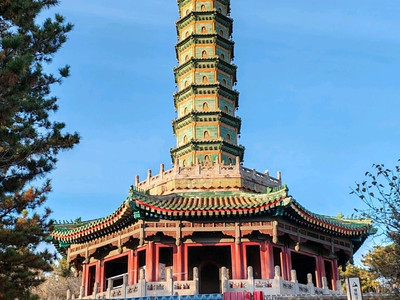
Xumi Fushou Temple.
5. Accessibility and Visitor Information
Conveniently located near the Potala Palace, Xumi Fushou Temple is easily accessible via a short electric cart ride. Admission to the temple is often included with tickets to the Potala Palace, making it an excellent addition to your itinerary. The temple is open daily from 8:00 AM to 5:30 PM, so plan your visit accordingly to make the most of your time.
6. Family-Friendly Environment
This site is suitable for visitors of all ages, making it an excellent choice for families. With gentle pathways and engaging sights, children and seniors alike can enjoy a leisurely exploration of the temple grounds. The serene atmosphere is perfect for relaxation and reflection, encouraging visitors to immerse themselves in the tranquility of the setting.
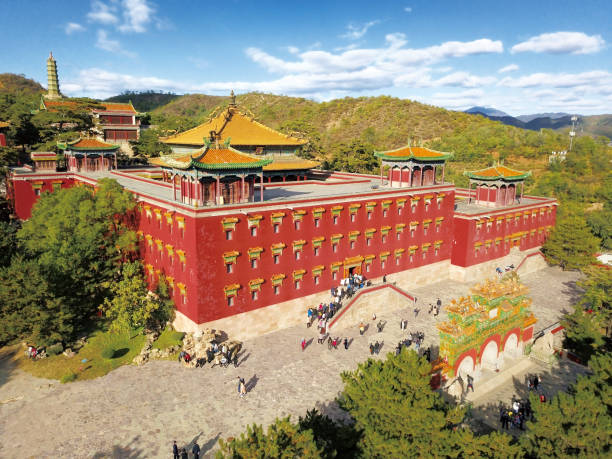
Xumi Fushou Temple.
7. Proximity to Other Attractions
While visiting Xumi Fushou Temple, take advantage of its proximity to several other historical sites, such as the Temple of Universal Peace (Puning Si) and the Imperial Summer Palace of Mountain Resort. A day spent exploring these nearby attractions can provide a comprehensive experience of Chengde’s cultural heritage.
Final Thoughts
Xumi Fushou Temple is more than just a quaint stop on a travel itinerary; it is a repository of history, art, and spirituality. Whether you are captivated by its architectural beauty, intrigued by its historical significance, or seeking a moment of peace, this temple promises a rich and rewarding experience. So, make sure to include it in your travel plans for an unforgettable journey through China’s storied past.
Planning Your Visit: A Practical Guide
Essential Information for Visiting Xumi Fushou Temple
Xumi Fushou Temple, nestled in the scenic city of Chengde, is a must-visit for anyone interested in the rich tapestry of Chinese history and culture. This temple, with its serene atmosphere and historical significance, offers a compelling glimpse into the spiritual life of the region.

Xumi Fushou Temple.
Location and Access
- Address: North of Chengde Summer Resort, Chengde 068450, China
- Access: The temple is conveniently located near other key attractions, such as the Potala Palace (Putuo Zongcheng Temple) and the Imperial Summer Palace. A free electric cart service is available from the Potala Palace, making it easy to combine visits to these sites.
Opening Hours
- Daily Hours: 8:00 AM – 5:30 PM
Note: It’s advisable to check for any seasonal changes in hours before your visit.
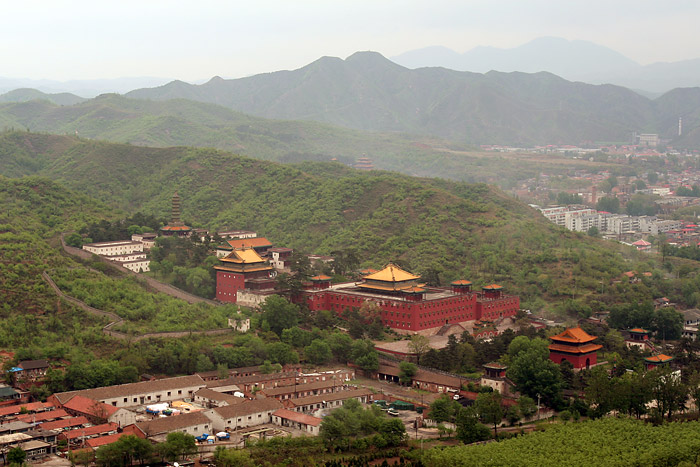
Xumi Fushou Temple.
Admission
- The ticket to Xumi Fushou Temple often includes admission to the nearby Potala Palace, providing excellent value and an opportunity to explore both sites in a single visit.
What to Expect
Xumi Fushou Temple, while not as grand as the Potala Palace, boasts unique architectural features and historical importance. Here’s what visitors can look forward to:
- Architectural Highlights: The temple features a striking red facade and intricate roof designs. The interior houses several fascinating relics and decorations.
- Atmosphere: Unlike many tourist hotspots, Xumi Fushou Temple is still actively managed by monks, which adds to the authenticity of your experience.
- Suitable for All Ages: The temple’s layout and facilities make it accessible for seniors and families with children alike.
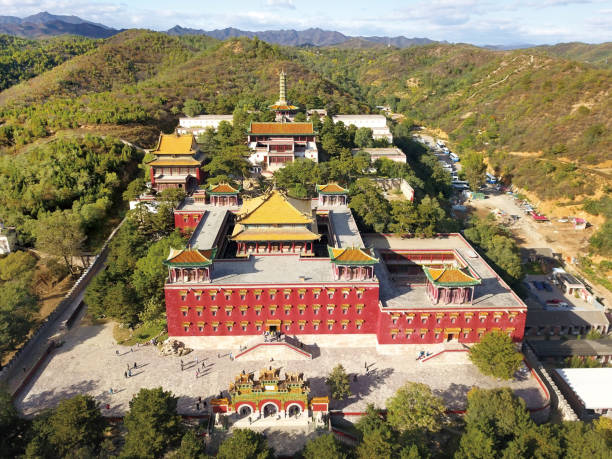
Xumi Fushou Temple.
Tips for Your Visit
- Bring a Flashlight: Some areas inside the temple may lack adequate lighting. A flashlight or the light from your phone can enhance your experience by helping you see intricate details of the architecture and artifacts.
- Wear Comfortable Footwear: The temple grounds can require some walking, so comfortable shoes are recommended.
- Plan Your Timing: To avoid crowds, consider visiting early in the morning or later in the afternoon.
- Combine Visits: Pair your visit to Xumi Fushou Temple with nearby attractions like the Temple of Universal Peace (Puning si) and the Imperial Summer Palace for a full day of exploration.
Nearby Amenities
If you’re planning to spend the day in the area, there are several dining and coffee options nearby:
- U.B.C. Coffee (2.1 mi) – Ideal for a quick caffeine fix.
- Giraffe Cafe (2.5 mi) – Offers a cozy environment for a meal or snack.
- Mu Hei Restaurant (2.5 mi) – A great spot for fast food options.

Xumi Fushou Temple.
Final Thoughts
Visiting Xumi Fushou Temple offers not only a chance to explore a significant historical and cultural site but also an opportunity to immerse yourself in the serene atmosphere that characterizes many of Chengde’s religious landmarks. Whether you are a history buff, a culture enthusiast, or simply seeking a peaceful retreat, Xumi Fushou Temple is a destination that should not be missed. Enjoy your journey into the heart of China’s rich heritage!
Tickets: Prices, Booking, and Tips
Visiting the Xumi Fushou Temple (须弥福寿之庙) is a deep dive into the rich tapestry of Chinese history and culture, and planning your visit is essential for a smooth experience. Here’s everything you need to know about tickets, prices, booking options, and some handy tips to enhance your journey.
Ticket Information
-
Admission Price: The ticket for Xumi Fushou Temple typically costs around 40 RMB (approximately $6 USD). This ticket often includes access to nearby attractions, so be sure to check for any combo deals.
-
Combined Tickets: Many travelers recommend purchasing a combined ticket that includes entry to the Potala Palace (Putuo Zongcheng Temple) and the Xumi Fushou Temple. This option can be cost-effective and saves you time, allowing for a seamless exploration of these significant sites.
Booking Options
-
On-site Purchase: Tickets can be purchased directly at the entrance of the temple. However, during peak tourist seasons, lines may be long, so arriving early is advisable.
-
Online Booking: For a more convenient experience, consider booking tickets online through various travel platforms. This can save you time and ensure that you have your admission secured, especially during busy periods.
Opening Hours
- The temple is open to visitors from 8:00 AM to 5:30 PM daily. Keep in mind that last entry is usually 30 minutes before closing, so plan your visit accordingly.
Tips for Your Visit
-
Bring a Flashlight: Some areas within the temple have limited lighting, so bringing a flashlight or using your phone’s light can enhance your experience, allowing you to fully appreciate the intricate details of the architecture and artifacts.
-
Wear Comfortable Shoes: The temple grounds can involve some walking and exploring, so comfortable footwear is recommended.
-
Respect the Environment: As this temple is an active place of worship, be mindful of your behavior, speak quietly, and respect the monks and other visitors.
-
Visit Nearby Attractions: The Xumi Fushou Temple is situated near several other must-see locations, including the Potala Palace and the Imperial Summer Palace of Mountain Resort. Consider planning your itinerary to visit these sites on the same day.
-
Plan for Weather Conditions: Chengde can experience varying weather, so check the forecast before you go. If rain is expected, an umbrella or raincoat could be useful, especially since some areas may not be well-lit.
By following these guidelines, you’ll not only enjoy your visit to the Xumi Fushou Temple but also gain a deeper appreciation for the rich cultural heritage embedded in its walls. Happy travels!
How to Get There: A Complete Transportation Guide
Getting to Xumi Fushou Temple: Your Transportation Guide
Xumi Fushou Temple (须弥福寿之庙), situated just north of the stunning Chengde Summer Resort, is a must-visit destination for anyone interested in Chinese history and culture. The temple, known for its serene atmosphere and rich heritage, is accessible through various modes of transportation. Here’s how to navigate your way to this fascinating site.
By Air
For international travelers, the nearest airport is Chengde Puning Airport (CDE), which is approximately 25 kilometers (about 15 miles) from the temple. Currently, the airport mainly serves domestic flights, so you may need to connect through a major Chinese city such as Beijing or Shijiazhuang.
- From Chengde Puning Airport:
- Taxi: The most convenient option. Expect to pay around 60-80 CNY (approximately $9-12) and a travel time of 30-40 minutes.
- Airport Shuttle: If available, this option may take you to the city center, from where you can transfer to a taxi or local bus.
By Train
Chengde is well-connected via rail, making it easy to reach from major cities like Beijing and Shijiazhuang.
- Train Stations:
- Beijing to Chengde: Regular high-speed trains run from Beijing North Railway Station to Chengde Railway Station, taking about 2 to 3 hours.
-
Shijiazhuang to Chengde: There are also trains from Shijiazhuang, which typically take around 2 hours.
-
From Chengde Railway Station:
- Taxi: A quick ride of about 10-15 minutes will take you to the temple, costing around 20-30 CNY ($3-5).
- Local Buses: Look for buses heading towards the Summer Resort area; these are often the most economical choice.
By Bus
Chengde’s bus network is extensive, with services from various cities.
- Long-Distance Buses:
-
Direct buses run from Beijing’s various bus terminals (e.g., Wangfujing, Liuliqiao) to Chengde. The journey will take around 3 to 4 hours.
-
Local Buses in Chengde:
- Once in Chengde, take a local bus (routes 3, 4, or 5) that heads towards the Summer Resort. The fare is usually around 2 CNY ($0.30).
By Car
If you prefer the freedom of driving, renting a car is a viable option.
-
From Beijing: The drive to Chengde takes approximately 3-4 hours via the G1 and G101 highways. The route offers scenic views, especially as you approach the city.
-
Parking: There are designated parking areas near the temple, making it easy to access the site.
Local Transportation
Once you arrive in Chengde, local transportation options make it easy to reach Xumi Fushou Temple:
- Electric Carts: A popular mode of transport near the Summer Resort. These carts provide a quick and eco-friendly way to navigate the area.
- Walking: If you enjoy a leisurely stroll, the temple is within walking distance from the Summer Resort, making it a pleasant 20-30 minute walk through beautiful landscapes.
Tips for Your Visit
- Bring a Flashlight: As noted by previous visitors, some of the temple interiors may be dimly lit. A flashlight can enhance your experience.
- Combine Visits: Consider visiting Xumi Fushou Temple alongside the nearby Potala Palace (Putuo Zongcheng Temple) for a more enriching historical experience, as tickets for both attractions can sometimes be combined.
Conclusion
With a variety of transportation options available, getting to Xumi Fushou Temple is both straightforward and convenient. Whether you arrive by air, rail, or road, the journey will set the stage for an unforgettable exploration of one of Chengde’s historical gems. Enjoy your visit!
Local Cuisine and Accommodation Nearby
Discovering Local Flavors and Comfortable Stays Near Xumi Fushou Temple
Visiting the Xumi Fushou Temple in Chengde is not just a journey into the realms of ancient history and stunning architecture; it also opens the door to a rich tapestry of local cuisine and inviting accommodations. Here’s how you can make the most of your time in this enchanting region.
Culinary Delights to Savor
Exploring Chengde’s local food scene can be a delightful adventure. Here are a few recommended eateries where you can indulge in authentic flavors:
-
Mu Hei Restaurant
Located just 2.5 miles from the temple, Mu Hei offers a variety of traditional Chinese dishes, with a focus on local specialties. The menu features everything from hearty noodle soups to flavorful stir-fries, all made from fresh, locally sourced ingredients. -
Giraffe Cafe
This cozy cafe, about 2.5 miles away, is perfect for a light meal or a refreshing drink after your temple visit. With a modern twist on traditional fare, Giraffe Cafe serves up everything from artisan sandwiches to delicious pastries, making it a great spot for a quick bite or a leisurely afternoon. -
U.B.C. Coffee
If you’re in need of a caffeine fix, U.B.C. Coffee, located 2.1 miles from the temple, is the place to go. This café not only serves a variety of coffee drinks but also offers a selection of light snacks and desserts. It’s a lovely spot to relax and recharge before continuing your exploration.
Comfortable Accommodations
When it comes to finding a place to stay, Chengde boasts a range of options to suit various budgets and preferences. Here are a few highly rated accommodations nearby:
-
Chengde Holiday Inn
This well-known international hotel chain offers comfortable rooms and modern amenities. Located conveniently within a few miles of the temple, it provides easy access to local attractions. Guests can enjoy a complimentary breakfast and a fitness center, making it a great choice for families and travelers seeking convenience. -
HanTing Express Chengde
For budget-conscious travelers, HanTing Express provides clean and comfortable rooms at an affordable price. Situated a short distance from the temple, it offers a cozy atmosphere and friendly service, allowing you to rest well after a day of sightseeing. -
InterContinental Chengde Resort
If you’re looking for luxury, the InterContinental Chengde Resort is an excellent choice. Nestled in a serene environment, this upscale resort offers stunning views, exquisite dining options, and a tranquil spa, ensuring a lavish experience during your stay.
A Memorable Experience Awaits
Whether you’re enjoying a bowl of steaming noodles at a local eatery or retreating to a luxurious hotel after a day of exploration, the area surrounding Xumi Fushou Temple offers a perfect blend of local culture and comforts. Be sure to savor the flavors and relax in style, making the most of your visit to this historical gem in Chengde.
Frequently Asked Questions
Frequently Asked Questions about Xumi Fushou Temple
1. What is Xumi Fushou Temple known for?
Xumi Fushou Temple, located in Chengde, China, is recognized for its intricate architecture that showcases traditional Tibetan Buddhist styles. It is particularly famous for its association with the Panchen Lama and serves as a serene site for reflection and worship, managed by real monks.
2. How do I get to Xumi Fushou Temple?
The temple is conveniently situated near the Chengde Summer Resort, making it easily accessible for visitors. You can take a free electric cart from the Potala Palace, which is just a short distance away, or opt for a leisurely walk through the picturesque surroundings.
3. What are the opening hours?
Xumi Fushou Temple is open daily from 8:00 AM to 5:30 PM. It’s advisable to visit during these hours to fully explore the temple and enjoy its tranquil atmosphere.
4. Is there an admission fee?
Yes, the temple has an admission fee, which often includes access to nearby attractions such as the Potala Palace. It is a good idea to check if there are any combined tickets available for a more economical visit.
5. What should I wear when visiting the temple?
When visiting Xumi Fushou Temple, it is recommended to dress modestly as a sign of respect. Comfortable shoes are also advisable due to the exploration of various temple structures and outdoor areas.
6. Are there any facilities available for visitors?
While the temple has basic facilities, including restrooms, there are limited amenities on-site. It’s a good idea to bring water and snacks, especially if you plan to spend an extended amount of time exploring the temple and its surrounding areas.
7. Is photography allowed inside the temple?
Yes, photography is generally allowed in and around Xumi Fushou Temple. However, it is important to be respectful of the monks and other visitors while capturing the beauty of the temple. Always check for signage regarding photography restrictions in specific areas.
8. Can families with children visit Xumi Fushou Temple?
Absolutely! Xumi Fushou Temple is a family-friendly destination. The peaceful environment and fascinating architecture are suitable for visitors of all ages, including children and seniors. Just be mindful of the temple’s serene atmosphere and maintain a respectful demeanor.
Final Thoughts on Your Trip
As your journey comes to a close, the Xumi Fushou Temple stands as a remarkable chapter in the rich tapestry of Chinese culture and history. Nestled near the majestic Chengde Summer Resort, this temple offers a serene escape into a world where ancient traditions and beautiful landscapes converge.
Reflect on Your Experience:
- Cultural Significance: The temple is a testament to the harmonious blend of Han and Tibetan Buddhist influences, making it an essential stop for anyone eager to understand the spiritual and historical nuances of the region.
- Architectural Wonders: From the intricately designed roofs to the stunning interior spaces, every corner of Xumi Fushou Temple beckons exploration. Remember to bring a flashlight to fully appreciate the beauty within!
- Family-Friendly: Whether traveling with kids or seniors, this temple is accessible and welcoming, making it a delightful stop for all ages.
Practical Tips for Future Visits:
- Combine Your Visits: Pair your visit to Xumi Fushou Temple with nearby attractions like the Potala Palace, allowing for a deeper appreciation of the area’s historical context. A single admission ticket grants you access to both.
- Plan Your Timing: Visit during the early morning or late afternoon to avoid crowds and capture the tranquil atmosphere.
- Culinary Delights: After your explorations, indulge in local dining options nearby, offering a taste of Chengde’s culinary heritage.
In conclusion, the Xumi Fushou Temple is more than just a site to behold; it is an invitation to reflect on the timelessness of faith and artistry. As you leave, carry with you the stories of the monks who still call this place home, and let the serenity of the temple continue to inspire your travels ahead. Safe journeys, and may your adventures in China be filled with wonder and discovery!